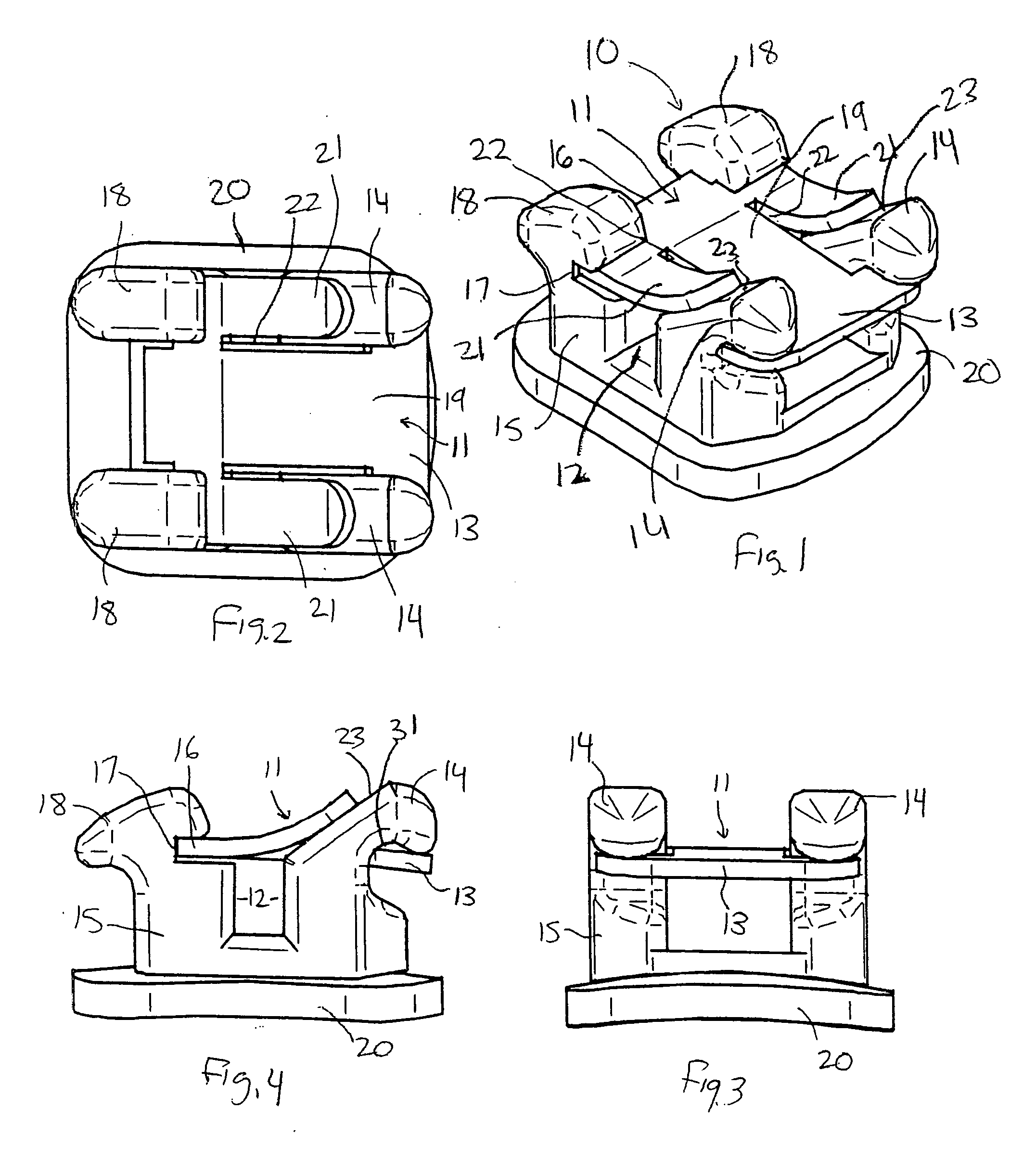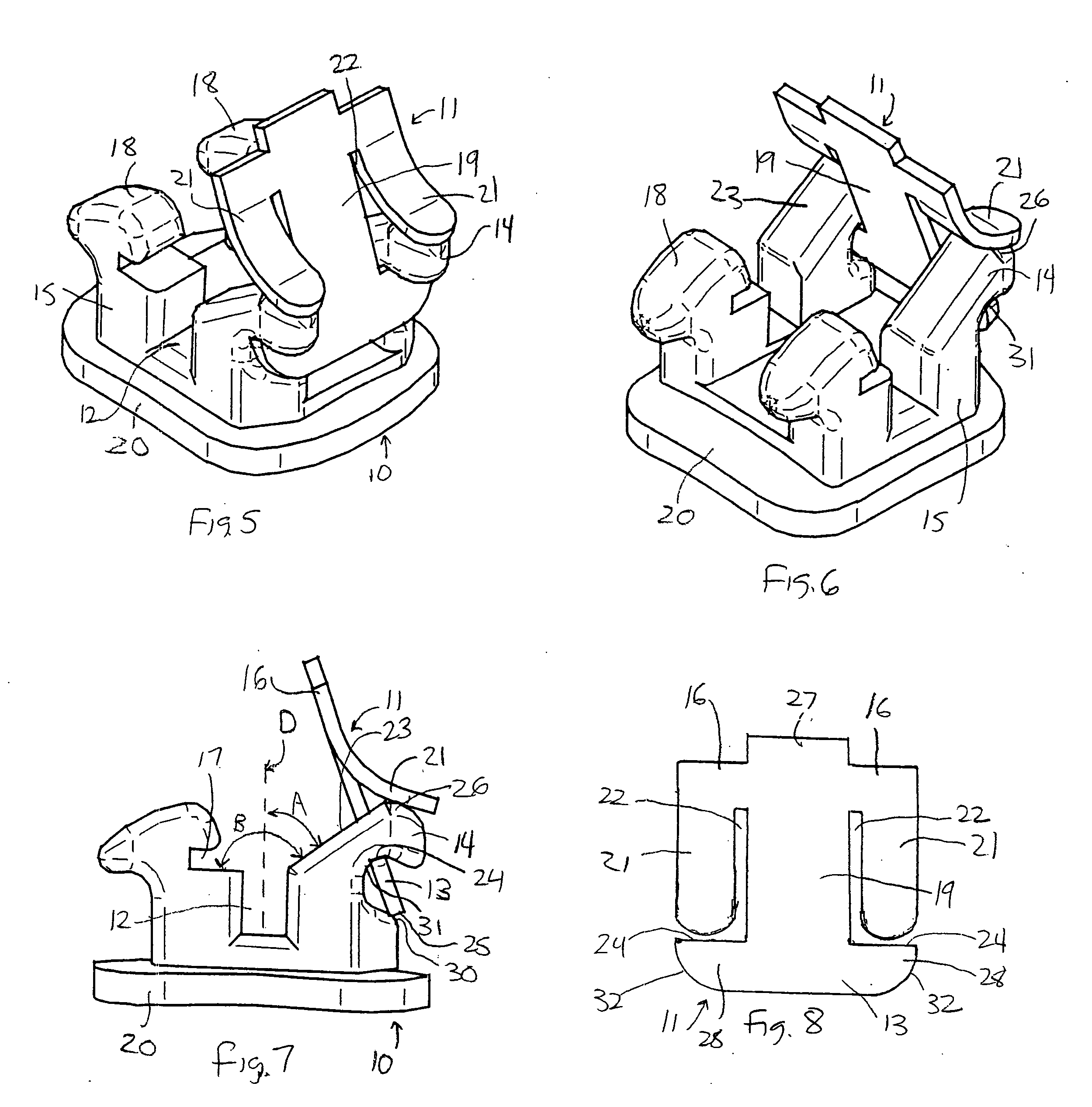Self-ligating bracket system
a bracket system and self-ligating technology, applied in the field of brackets, can solve the problems of time-consuming and laborious installation of ligatures, stained and unsightly, and difficult to remove shutters or clips that slide into and out of place,
- Summary
- Abstract
- Description
- Claims
- Application Information
AI Technical Summary
Benefits of technology
Problems solved by technology
Method used
Image
Examples
Embodiment Construction
[0040] The invention is a self-ligating bracket system that relies on one or more arms or wings to lock the shutter or clip in place. Bracket systems are classified as either passive or active. A passive bracket system traps an archwire in the slot and creates an inflexible barrier when the archwire exerts force against it. An active or interactive bracket system is resilient, i.e. yields to some extent when the archwire moves against it, and exerts a counter force that tends to urge the archwire back into the slot. The examples discussed herein are of the passive type. The clip of the invention is resilient and bends when locking, exerting a resilient force. The resilient force is used to lock the clip, and it becomes a passive type of locking system.
[0041] With reference to FIGS. 1 to 8, a self-ligating bracket system of the invention includes a bracket 10 with a body 15 and base 20, and a clip 11 that is removably mounted thereon over the archwire slot 12. The clip 11 of the inv...
PUM
 Login to View More
Login to View More Abstract
Description
Claims
Application Information
 Login to View More
Login to View More - R&D
- Intellectual Property
- Life Sciences
- Materials
- Tech Scout
- Unparalleled Data Quality
- Higher Quality Content
- 60% Fewer Hallucinations
Browse by: Latest US Patents, China's latest patents, Technical Efficacy Thesaurus, Application Domain, Technology Topic, Popular Technical Reports.
© 2025 PatSnap. All rights reserved.Legal|Privacy policy|Modern Slavery Act Transparency Statement|Sitemap|About US| Contact US: help@patsnap.com



